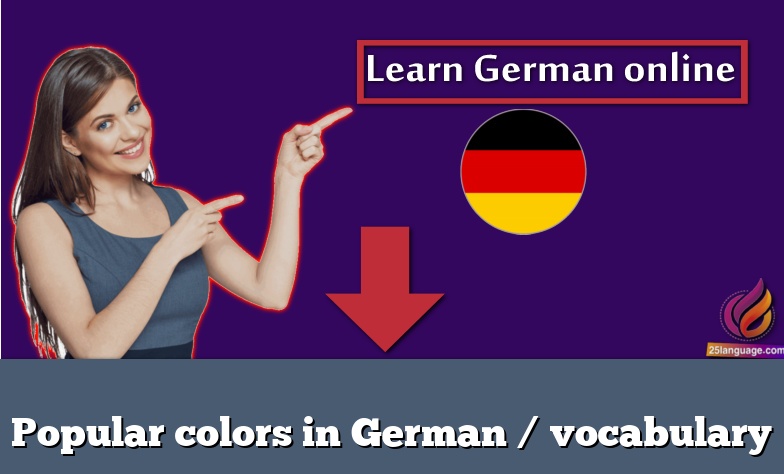Popular colors in German / vocabulary

Colors in German
Color words are one of the most useful tools we have for identifying things . Thus, learning how to name and pronounce colors in German is a useful skill to have in your back pocket.
A brief usage note: colors in German are adjectives and so, they come before the noun when you’re describing something. “The red car” would be “das rote Auto” . Here, there is also often an ending -e added when the color comes before a noun. And when you want to say “light blue” or “dark blue” the words for “light” and “dark” are appended to the front of the color word, as you see with hellblau (light blue). With that knowledge, here are the basic colors to get you started as you learn German :
- red → rot
- orange → orange
- yellow → gelb
- green → grün
- blue → blau
- light blue → hellblau
- dark blue → dunkelblau
- purple → lila
- pink → rosa
- khaki → khaki
- black → schwarz
- white → weiΒ
- gray → grau
- brown → braun
To describe colors in German :
- light → hell
- dark → dunkel
- dull → matt
- colorful → bunt
To conclude , we will use those vocabularies in some sentences , listen to them carefully !
|
Snow is white.
|
|||
|
The sun is yellow.
|
|||
|
The orange is orange.
|
|||
|
|
|
|
|
|
The cherry is red.
|
|||
|
The sky is blue.
|
|||
|
The grass is green.
|
|||
|
|
|
|
|
|
The earth is brown.
|
|||
|
The cloud is grey / gray (am.).
|
|||
|
The tyres / tires (am.) are black.
|
|||
|
|
|
|
|
|
What colour / color (am.) is the snow? White.
|
|||
|
What colour / color (am.) is the sun? Yellow.
|
|||
|
What colour / color (am.) is the orange? Orange.
|
|||
|
|
|
|
|
|
What colour / color (am.) is the cherry? Red.
|
|||
|
What colour / color (am.) is the sky? Blue.
|
|||
|
What colour / color (am.) is the grass? Green.
|
|||
|
|
|
|
|
|
What colour / color (am.) is the earth? Brown.
|
|||
|
What colour / color (am.) is the cloud? Grey / Gray (am.).
|
|||
|
What colour / color (am.) are the tyres / tires (am.)? Black.
|
|||
|
|
|
|
|




























